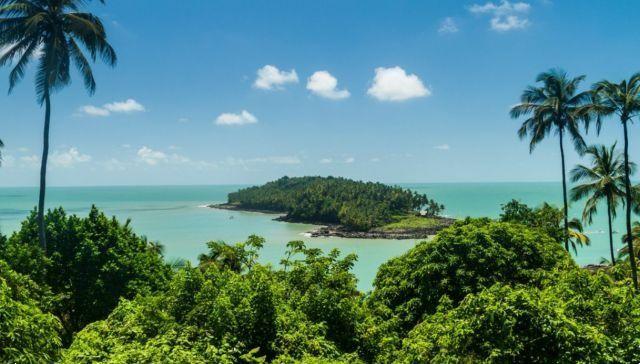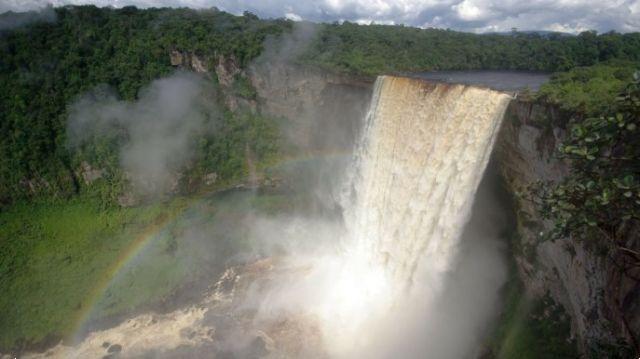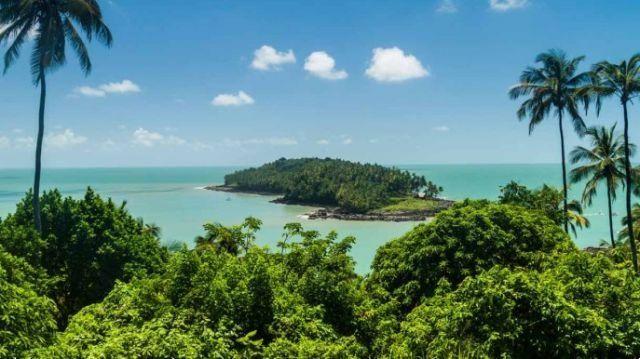 Discovering French Guiana, a land rich in water, forests and natural paradises with stops at the Amazon Park, the Voltaire waterfalls, the Isle du Salut...
Discovering French Guiana, a land rich in water, forests and natural paradises with stops at the Amazon Park, the Voltaire waterfalls, the Isle du Salut...
La French Guiana it is located in the northern part of South America, between Brazil and Suriname. Overlooking the Atlantic Ocean, it is the largest of the French overseas departments. In Guyana the official language is French but Native American languages and Creole are widespread. The region has a stable equatorial climate, with an average temperature of 26°C, and two rainy seasons, from April to August and from November to February.
The surface area of approximately 83.800 km² is mainly wooded, decidedly sparsely populated, and numerous protected areas have recently been established. Half of theecotourism they are the Amazon Park of French Guiana and the Kaw-Roura Marshes Nature Reserve, the latter a short distance from the capital Cayenne.
If you like uncontaminated nature, start your tour of French Guiana – “French” could be omitted: it serves to distinguish the French department from the independent South American state – by visiting the Parc Amazonien de Guyane, established in 2007 in the southern part of the country. It borders Brazil's Tumucumaque National Park and together they form one of the largest protected tropical areas in the world. The biodiversity present in the park includes more than 5000 floral species and around 1200 types of trees. Birds are the most present animals: there are more than 700 species.
Alternatively, head towards the only marine protected area, theGrand Connetable Island: green turtles, a rare species, are found here. And then take a trip to the famous Voltaire Falls which are located a few kilometers from the border with Suriname. The protected area is of rare beauty and the waterfalls are decidedly suggestive. About 35 meters high, they offer a unique spectacle and a breathtaking view. The trip can prove adventurous and it is necessary to have some familiarity with trekking before entering the forest. The more adventurous, by organizing themselves to sleep outdoors, can go on multi-day excursions.
Certainly, the capital of French Guiana is worth a visit, Cayenne (Cayenne), a town located near the river of the same name which flows into the Atlantic Ocean. The city has maintained its French colonial style and preserves numerous historic buildings, the mix of cultures that can be felt today makes it an interesting place to visit. The colonial fort that dominates the city was built on Mount Cépérou: from here you can enjoy a splendid view of the town center and the coast.
The main shops are located in the city center local crafts. French Guiana is still the territory inhabited by different ethnic groups and this means that the offer of souvenirs is decidedly varied: porcelain, embroidery, wooden statuettes are the works of different cultural groups... there really is something for all tastes. There is also the Museum of Guyana Cultures in the city which offers tourists an overview of the different cultures. Place des Palmistes, in the center of which the statue of the governor stands out, is the fulcrum of local life, a meeting place not only for tourists but for the numerous young people who flock to the bars.
The most important cultural event in Cayenne is the Carnival, which takes place between January and February and attracts numerous tourists to French Guiana every year. This traditional event lasts several weeks and takes up most of the streets, involving the entire population. The celebrations include parades, masked shows, dances, music and a great desire to let loose; if you like to let loose, the end of winter is the right time to travel to this splendid corner of the world.
Until the last century, its territory was home to the penal colony French. The construction of the penal baths began in 1854, to address the shortage of labor on the plantations: in fact, the abolition of slavery in the territory of French Guiana dates back to those years. In particular, political prisoners were relegated to the Isle du Salut. The prisons were in operation for an entire century, until the end of the Second World War, then the prisoners were repatriated.
Today it is possible to visit the islands du Salut off the coast of French Guiana – Devil's Island, Île Royale and Île Saint-Joseph – departing by boat from Kourou. The entire coast of French Guiana is full of suggestive beaches and the archipelago of the Isle du Salut also offers dream places. Don't miss the opportunity for a relaxing break on the white sand of these coasts.
One of the most unique tourist attractions in French Guiana is the Center Spatial Guyanais, located near Kourou. The CSG, wanted by Charles de Gaulle, was built considering the notable positive factors of the place, including the low population density and the proximity of the Ocean, furthermore the proximity to the equator makes it one of the best launch sites present. Started in 1965, it entered into operation a few years later. If you arrive in Guyana at the right time you can attend a launch, it will definitely be a unique experience!






